Cyril Roger Brossard
Well-known member
- Joined
- Aug 30, 2012
- Messages
- 408
As seen in JOIA & CIA Jan-Feb 2012
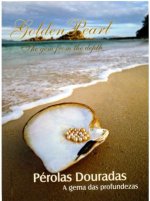
Page1
Terramar Farm
Hecliton Santini, S?rgio D?aurea, Patricia Brugger, Helena Cattaneo and a staff of biologists, scientists and technicians of the Terramar farm, producer of Golden pearl, gather for a lunch. The meeting of the generation shows, in a traditional way, the continuity of the work made in the Palawan Island.
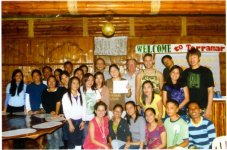
Page2
Manuel Cojuangco and Jacques Branellec invited us to know the Terramar Fazenda ? located in the Philippines, in the Palawan Island ? and check the process of the golden pearl production. The area is worldly known for its natural beauty, magnificent flora and incredible marine fauna, and lives in a symbiotic relationship with the pearl farms.
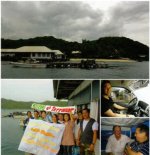
This is due, specially, because the cultivated oyster to produce the pearls, Pinctada maxima, needs an appropriate environment to survive in high seas, under the ocean, being very sensitive to changes in temperature, light intensity and mechanic interactions. Therefore, the clear waters of Palawan Island are the perfect habitats for the production of the oyster that originate the South Sea pearl, really appreciated in the market for its quality.
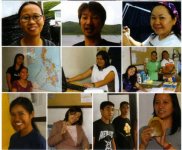
The intense golden coloration of the pearl is the result of researches and investments in biotechnology that are continuously developed by Jewelmer.
Page3
The process of cultivating golden pearls in the Philippines takes more than five years to finish and requires the precise execution of 323 steps. The pearls unique feature in the Philippines is the alteration of organic material and calcium carbonate layers, whom form a much denser nacre shell. This development process increases the gem?s brightness.
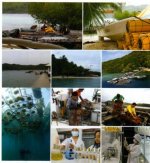
The factors that may influence the individual characteristics of each pearl are different: latitude, weather conditions, the amount of plankton in the water, the genetics of the pearl?s oyster and the quality of the sea floor and some examples. As these features are different in each producing country, there is no gem exactly like the Philippine pearl in any other part of the world.

The golden pearl is formed through a process of biomineralization. A nucleus is inserted under the oyster mantle and the cells generate a compartment where the pearl is formed.
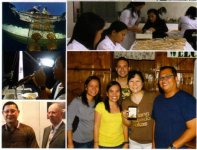
Page4
The compartment is a membrane that isolates the nucleus inserted into the oyster body. The pearls only get the perfect symmetry when their nucleuses are precisely well accommodated.
Through a complex genetic programming, the nucleuses inserted in the oysters begin to solidify into aragonite crystals, which is one of the crystalline forms of carbonate calcium.

These crystals form several layers until the final result gets ready: a wonderful golden pearl of the South Seas. The aragonite crystals can only join the nucleus of the future pearl thanks to the presence of conchiolin, a substance that also influences the pearl pigmentation.
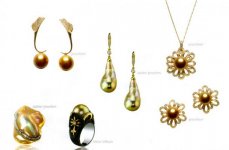
In each pearl harvest, only some of them are extremely perfect. As the production process is too long, it is almost impossible to avoid that the oyster suffer no interference during the period. That is why the number of perfect gems is greatly reduced. Any outside interference in
Page5
the formation process, even if it is minimum, can change their surface?s appearance, color, brightness and quality features. To produce the perfect pearl, the oyster can never be affected by the presence of any parasites or by changes in temperature or water condition.
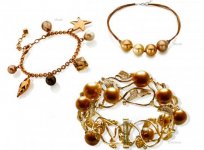
The Jewelmer golden pearl producer in the Philippines took 20 years of research to create the perfect cultivation technique of golden lip oyster. The company also created the healthy pearl with high quality nacre and the perfect golden color during this period.

To ensure the pearls quality and to optimize the production, Jewelmer has a genetic historic of all oysters used in the production process.
The young oysters are monitored and receive different types of food for each development stage. First, they are cultivated in tanks. After two
Page6
or three months they are transferred to an ideal marine environment. At this stage, only 5-8% of the oysters survive.
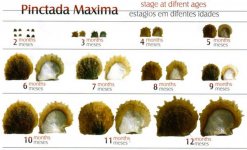
This means that for every 100 oysters in the first stage, no more than 8 survive to become useful in later stages. The grown oysters can be classified into three categories: for nucleus application, for reproduction and mantle tissue donor.
The oysters that are more suitable for nucleus insertion are manually selected.
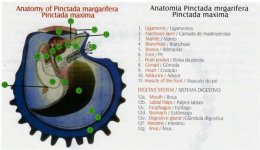
Then, small round beads are carefully along with a piece of mantle from the oyster that has the desired color for the pearl. Only after six years, producers can conclude the harvest and check the final result. The Jewelmer follows a production process that depends on human hands, but above all, it depends on the Nature to happen in the most perfect way.


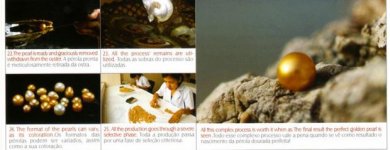
Nothing follows.

Page1
Terramar Farm
Hecliton Santini, S?rgio D?aurea, Patricia Brugger, Helena Cattaneo and a staff of biologists, scientists and technicians of the Terramar farm, producer of Golden pearl, gather for a lunch. The meeting of the generation shows, in a traditional way, the continuity of the work made in the Palawan Island.

Page2
Manuel Cojuangco and Jacques Branellec invited us to know the Terramar Fazenda ? located in the Philippines, in the Palawan Island ? and check the process of the golden pearl production. The area is worldly known for its natural beauty, magnificent flora and incredible marine fauna, and lives in a symbiotic relationship with the pearl farms.

This is due, specially, because the cultivated oyster to produce the pearls, Pinctada maxima, needs an appropriate environment to survive in high seas, under the ocean, being very sensitive to changes in temperature, light intensity and mechanic interactions. Therefore, the clear waters of Palawan Island are the perfect habitats for the production of the oyster that originate the South Sea pearl, really appreciated in the market for its quality.

The intense golden coloration of the pearl is the result of researches and investments in biotechnology that are continuously developed by Jewelmer.
Page3
The process of cultivating golden pearls in the Philippines takes more than five years to finish and requires the precise execution of 323 steps. The pearls unique feature in the Philippines is the alteration of organic material and calcium carbonate layers, whom form a much denser nacre shell. This development process increases the gem?s brightness.

The factors that may influence the individual characteristics of each pearl are different: latitude, weather conditions, the amount of plankton in the water, the genetics of the pearl?s oyster and the quality of the sea floor and some examples. As these features are different in each producing country, there is no gem exactly like the Philippine pearl in any other part of the world.

The golden pearl is formed through a process of biomineralization. A nucleus is inserted under the oyster mantle and the cells generate a compartment where the pearl is formed.

Page4
The compartment is a membrane that isolates the nucleus inserted into the oyster body. The pearls only get the perfect symmetry when their nucleuses are precisely well accommodated.
Through a complex genetic programming, the nucleuses inserted in the oysters begin to solidify into aragonite crystals, which is one of the crystalline forms of carbonate calcium.

These crystals form several layers until the final result gets ready: a wonderful golden pearl of the South Seas. The aragonite crystals can only join the nucleus of the future pearl thanks to the presence of conchiolin, a substance that also influences the pearl pigmentation.

In each pearl harvest, only some of them are extremely perfect. As the production process is too long, it is almost impossible to avoid that the oyster suffer no interference during the period. That is why the number of perfect gems is greatly reduced. Any outside interference in
Page5
the formation process, even if it is minimum, can change their surface?s appearance, color, brightness and quality features. To produce the perfect pearl, the oyster can never be affected by the presence of any parasites or by changes in temperature or water condition.

The Jewelmer golden pearl producer in the Philippines took 20 years of research to create the perfect cultivation technique of golden lip oyster. The company also created the healthy pearl with high quality nacre and the perfect golden color during this period.

To ensure the pearls quality and to optimize the production, Jewelmer has a genetic historic of all oysters used in the production process.
The young oysters are monitored and receive different types of food for each development stage. First, they are cultivated in tanks. After two
Page6
or three months they are transferred to an ideal marine environment. At this stage, only 5-8% of the oysters survive.

This means that for every 100 oysters in the first stage, no more than 8 survive to become useful in later stages. The grown oysters can be classified into three categories: for nucleus application, for reproduction and mantle tissue donor.
The oysters that are more suitable for nucleus insertion are manually selected.

Then, small round beads are carefully along with a piece of mantle from the oyster that has the desired color for the pearl. Only after six years, producers can conclude the harvest and check the final result. The Jewelmer follows a production process that depends on human hands, but above all, it depends on the Nature to happen in the most perfect way.



Nothing follows.
